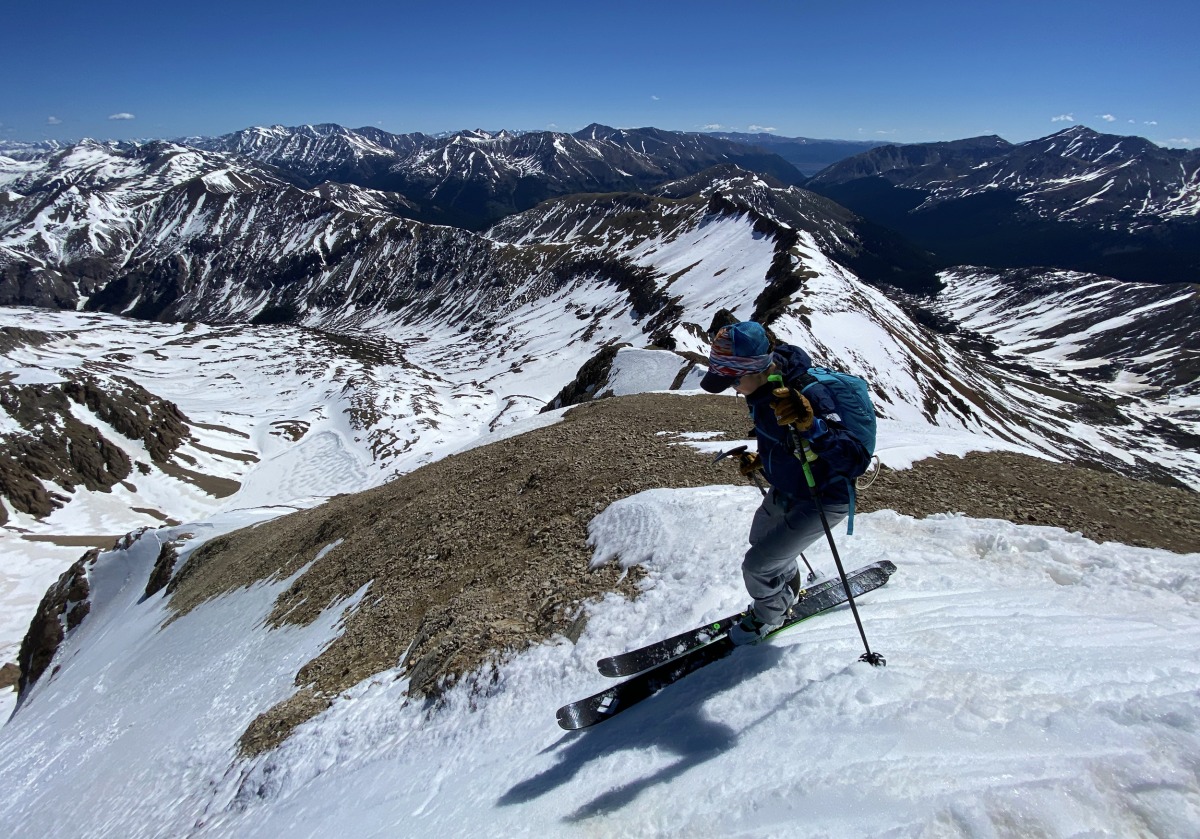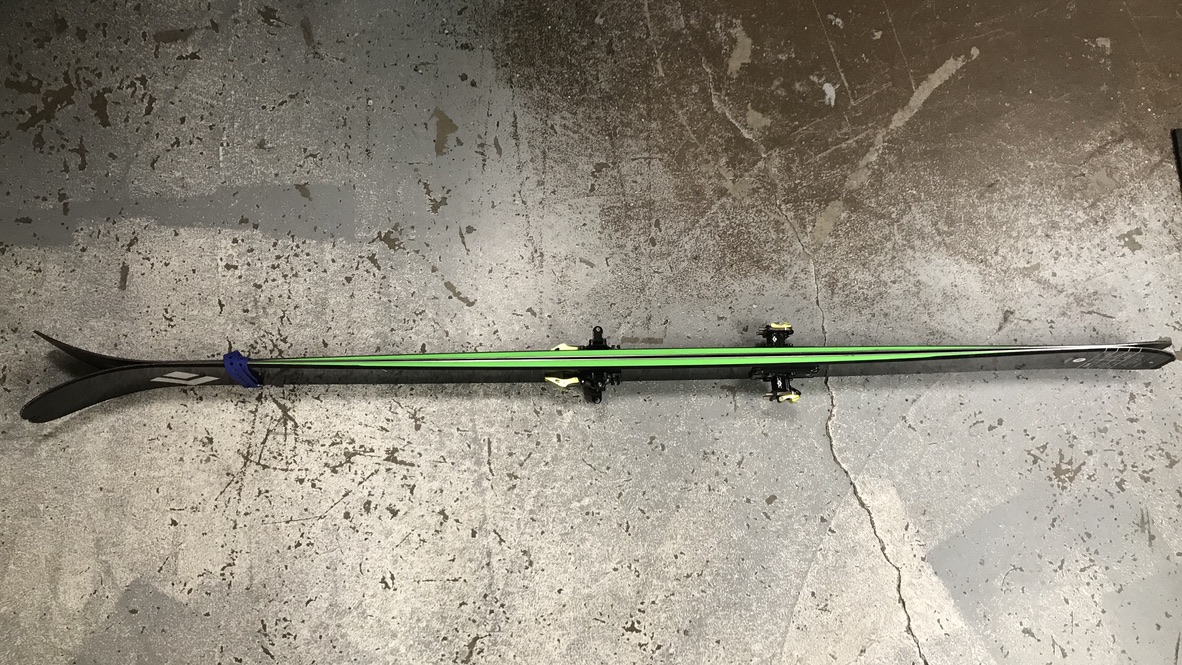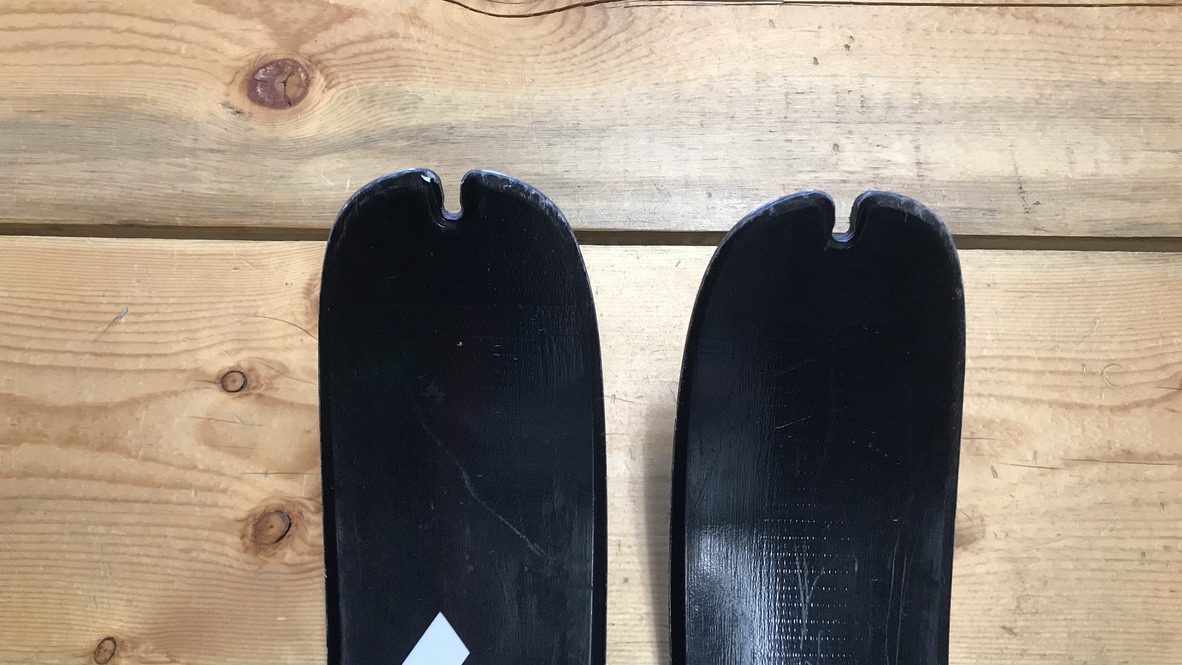While approaching the ridge of a peak near Marble, Colorado last spring, I realized just how quickly daylight was fading. Doug and I had broken out of dense trees to witness a gentle kaleidoscope of evening sun patches passing over the not-too-distant flanks of nearby summits. The ridge we stood on rolled out to the south and off of it ran numerous open slopes ranging in pitch from 25 to 40 degrees. The mellower slopes we sought were farther down the ridge, which meant we’d burn more daylight to reach them. We had to move quickly.
Sliding underfoot were the Black Diamond Cirque 78s, a new ski in a new category in Black Diamond’s 20/21 lineup. I’d chosen the ski for our late day mission for two reasons: 1) Its sub-1000g weight gave me confidence I could cover the 14 mile round trip relatively quickly and 2) I wasn’t sure what sort of conditions we’d encounter and wanted to see how the ski would handle whatever was thrown at it.
I’d skied the Cirques one other day that spring, a resort uphill hamster wheel day in 10 inches of dense spring powder. The ski had been delightfully easy and light on the up, and unexpectedly fun in the powder snow on the down. So I was excited to see how it would handle an objective closer to what it was made for: long approach ski mountaineering missions where ski weight and skiability carry relatively equal importance.
The Cirque series includes 78 and 84 widths and comes on the heels of the popular Helio Carbon line (20/21 Helio 104 reviewed here). It is a traditional shaped, narrow waisted ski with full engineered Paulownia core, carbon pre-preg and semi-cap construction with partial ABS sidewall. It replaces the Helio 76 which was a bit of an odd stepsister amongst its hard-charging Helio brethren.
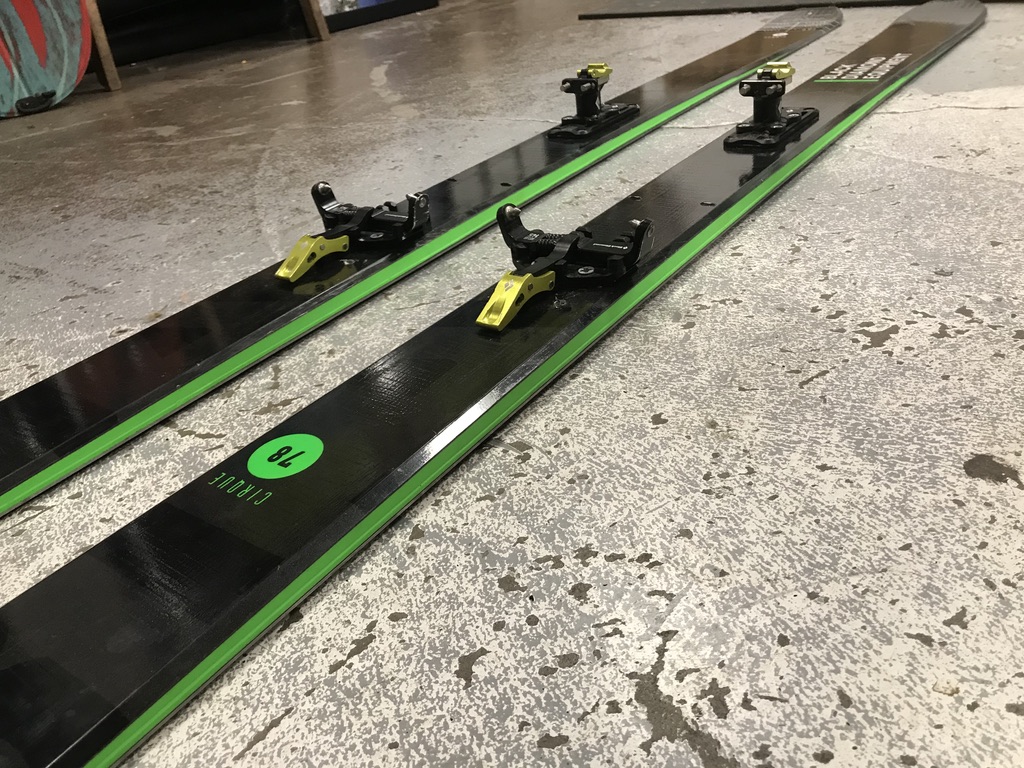
The partial ABS sidewall and semi-cap construction trim weight without sacrificing much by way of performance.
The goal with the Cirque, says Black Diamond Ski Category Directory Andy Merriman, was to create an objective-oriented ski specifically for the ski mountaineering side of the community. “If you’re going to put your skis on your pack and are probably at some point going to pull out a rope and harness, then the Cirques are the skis for you. You need the lightweight for a reason but you also want to get down in a good fun way and have the performance there.”
That meant not just reworking the heavier, performance oriented carbon, full sidewall Helio platform into a light skinny ski. So, the Cirque was born and built from the ground up, incorporating many of the same attributes as the Helio but opting for a shorter turning radius (18.5m for the 169cm 78 vs 19m for the 171cm Helio 76), semi cap and partial sidewall and full Paulownia core instead of Balsa. (It’s worth noting that all 20/21 Helio skis now have engineered Paulownia cores as well.)
Ski performance
When Doug and I finally pulled our skins that late evening in Marble, we found fast fading light and snow that needed extra attention: roughly six inches of soft untracked powder on quickly hardening crust. After a few timid turns, I realized how predictable the ski felt, even in the less than predictable snow. I settled into smooth flow, busting through the softer crust and gliding through the powder snow with relative ease. When we dipped into sparse aspen trees halfway down the run, the skis turned quickly and easily, despite that the crust was punchier and the snow stickier. I played with how much pressure I put into the edges and found the rebound springy and energetic but not unwieldy.
Over subsequent days on the skis, I identified a few major pros: easy turn initiation, responsiveness, just plain fun. I found the Cirques to be one of those skis that hits that perfect high notes with surprisingly reliable frequency in a variety of conditions. Ankle deep powder, dust on crust, icing on crust, mushy corn — once I got to know the ski a little I realized just how much it would confidently but gracefully charge through almost any kind of snow.
On a warm day on spring corn, the Cirques cut through the soft surface with such playful ease, I had to skin up for another lap. On a summer bike to ski adventure, I easily pointed their tips down the 50 degree lip of Grizzly couloir without a second thought. I knew I could trust the skis to provide a stable fun platform from which to rip. And they did, through punchy crust, crusted mush, and potatoey slop at the bottom of the couloir.
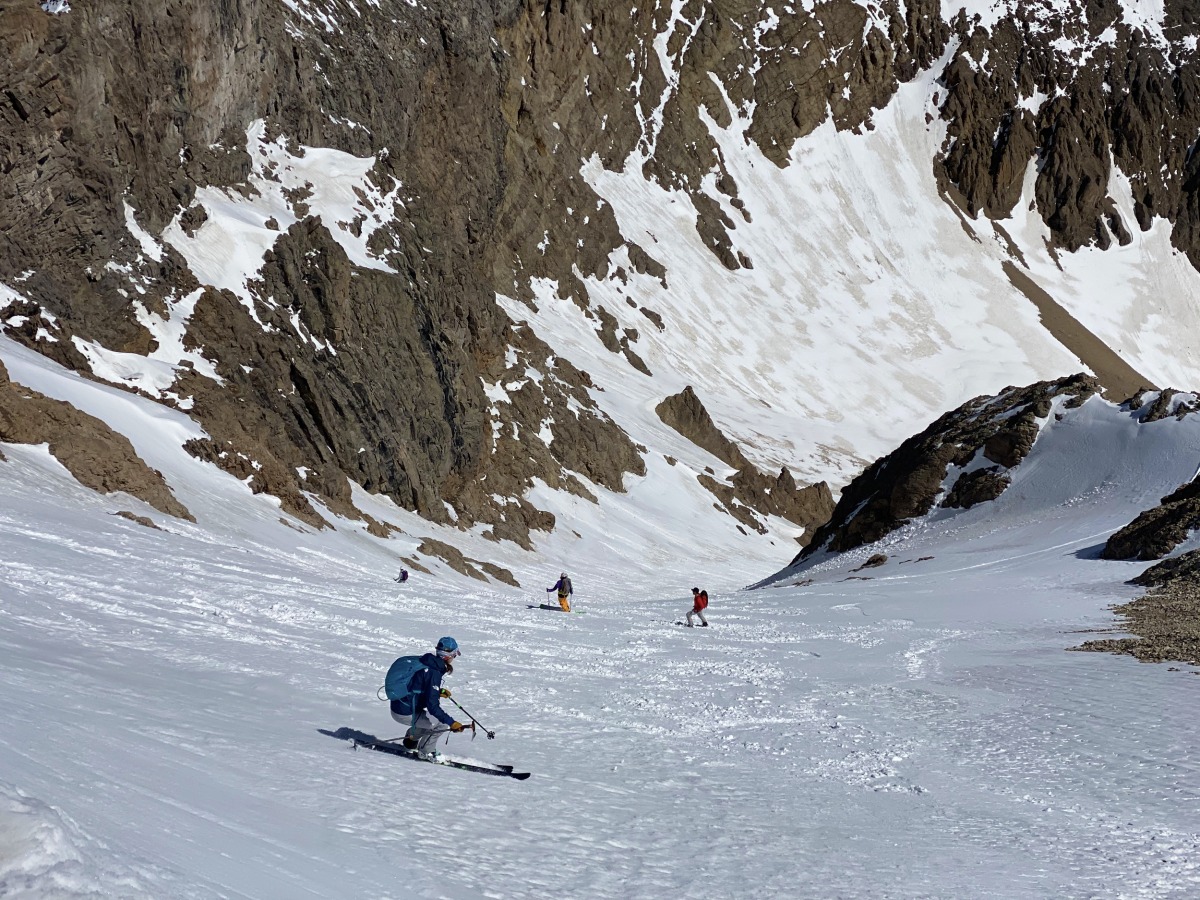
The Cirques charged through variable top crust, bottom crust and mushy corn with playful consistency. Photo: @hughcarey406
Uphill performance
At just under 1000g per ski (only slightly more when paired with the Black Diamond Helio 145 binding and BD Ultralite mohair/nylon skin), I didn’t notice the ski much more than my race sticks. They are light, easy to maneuver and minimal, equally at home on a skin track, lashed to a pack or fastened to a bike for multi-sport adventures. They also feature a notched tip and tail to accommodate a variety of skin attachments.
Ideal user
As mentioned above, the ski was made with the objective-oriented ski mountaineer at the forefront. Due to its weight and minimalist nature, it easily crosses over into the daily fitness touring ski. I used it for both in my testing and found it well suited. For me, they became the go-to when I sought ultimate efficiency but wanted something more substantial than race skis.
Length
Testers don’t always get to choose their length of ski and at 5’5” and 120 pounds I thought the 169 might ski a bit long. It was, though not unmanageably. If I had my choice, I would downsize to the 161 and settle in for my truly ideal spring mountaineering ski. It’s worth noting that BD does cater to smaller skiers seeking smaller skis. While the 78 bottoms out at 161cm, the 84 goes down to 157cm.
Durability
No issues yet with durability; we’ll see how they hold up over the coming season. The ski also features a high-density PTEX-4500 base which should, in theory, hold up to some good use and abuse.
Comparable skis
The Cirque series finds itself in good company with the Dynafit Blacklight and Atomic Backland. Having given the Blacklight a first ski last winter, I can confidently say the Cirque is softer and more playful while the Blacklight is more stiff and utilitarian. Both have their place in the ski mountaineering category, it just depends on the preference and ability of the skier.
Caveats
Due to Covid concerns and other limiting factors, I didn’t get to turn the ski in all spring conditions. Steep ice, for instance could test performance a bit more. I’m also a relatively light skier and found the stiffness ideal for my weight and ski style. A heavier, more aggressive skier might have a different view.
Bottom line
For a playful and capable ski that’s light enough to make big missions approachable but skis well enough to make them fun, I recommend the Cirque 78. Now it’s time to start snow-dancing so we can all get out on the snow again soon.
SPECS
Weight – 970g (169cm)
Available lengths – 161cm, 169cm, 177cm
Dimensions – 110 mm – 78 mm – 99 mm
Core – Paulownia, pre-preg carbon fiber
MSRP – $799
Shop for the Cirque skis.
Manasseh Franklin is a writer, editor and big fan of walking uphill. She has an MFA in creative nonfiction and environment and natural resources from the University of Wyoming and especially enjoys writing about glaciers. Find her other work in Alpinist, Adventure Journal, Rock and Ice, Aspen Sojourner, AFAR, Trail Runner and Western Confluence.

